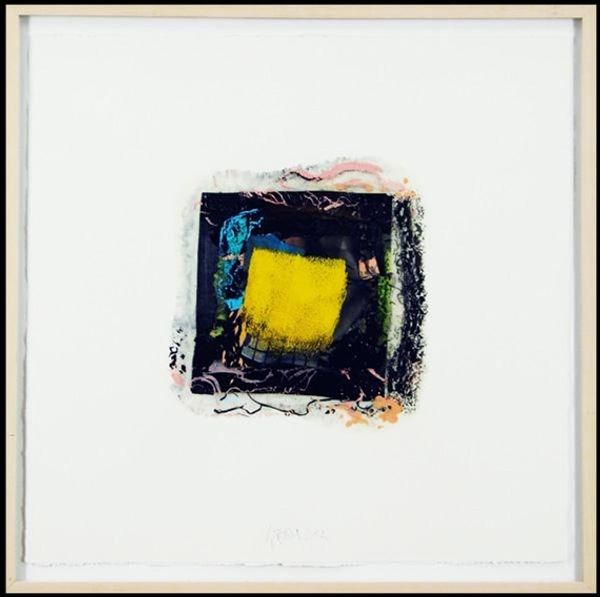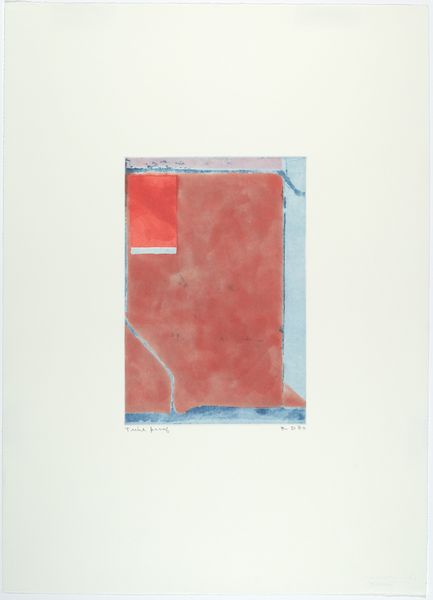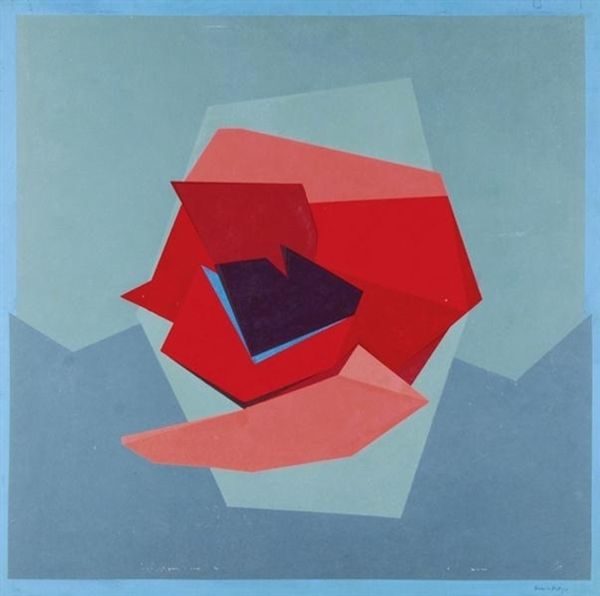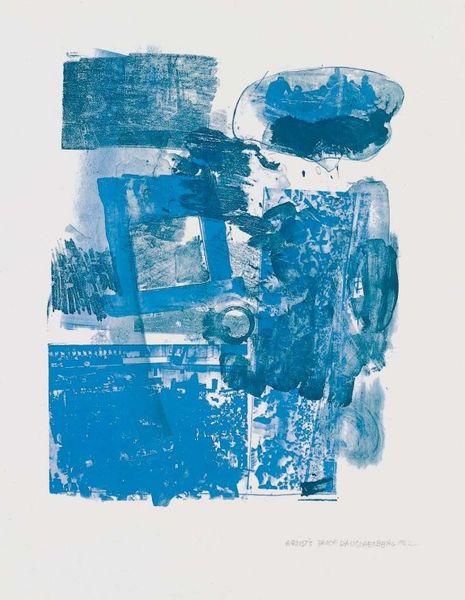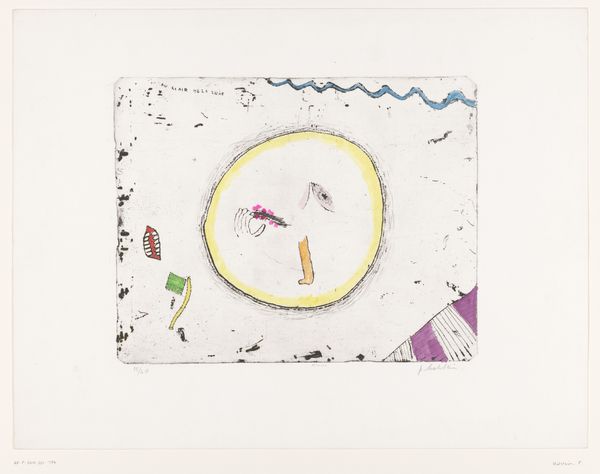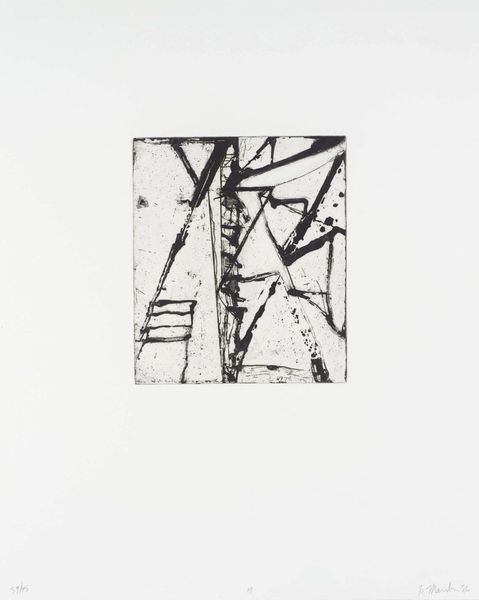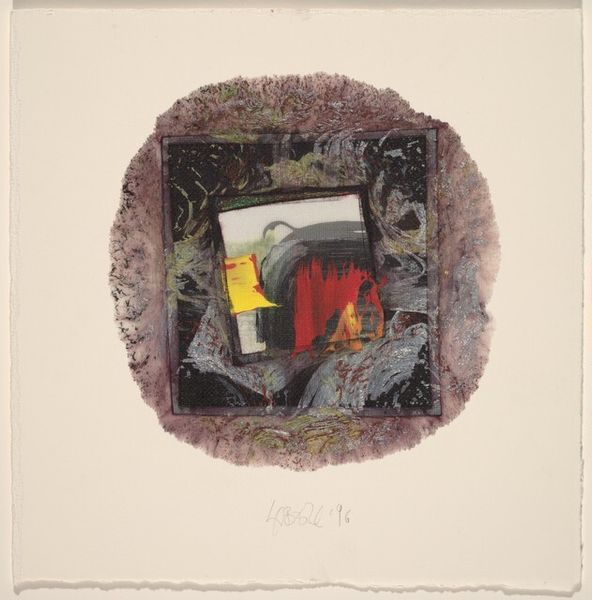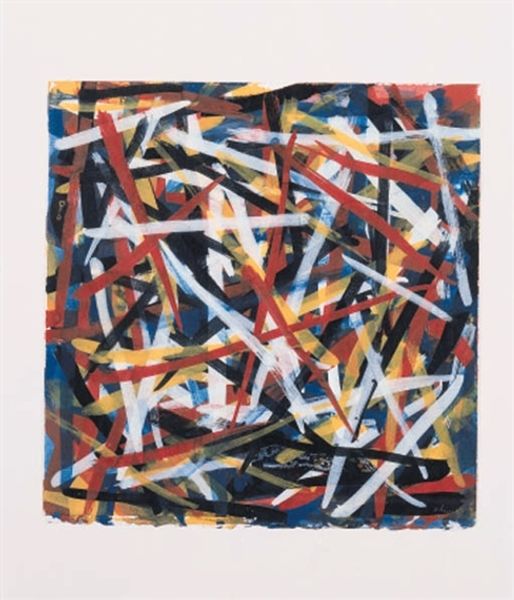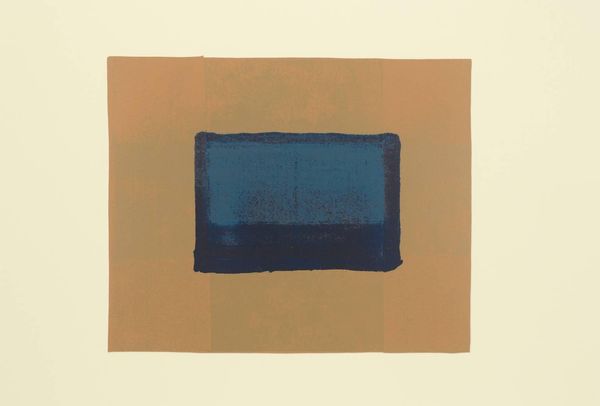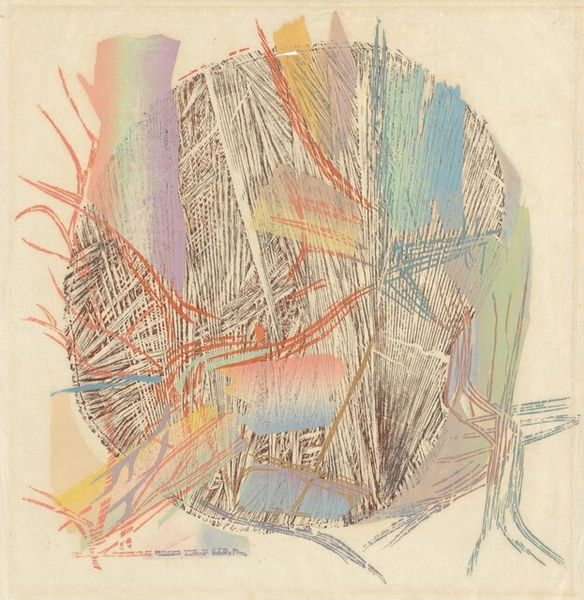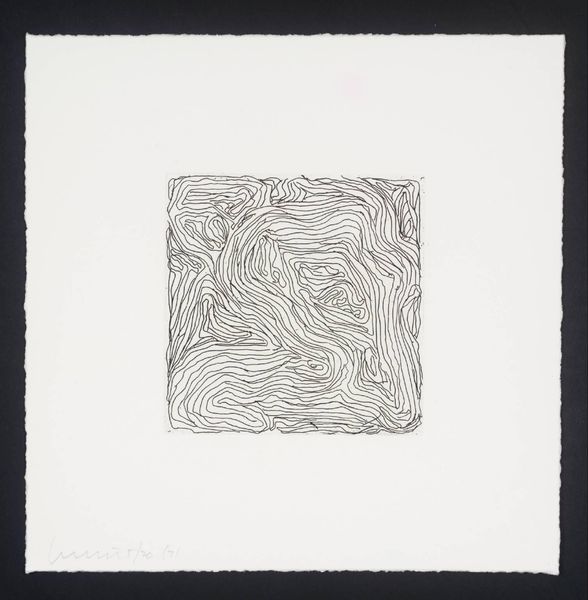
mixed-media, acrylic-paint
#
mixed-media
#
acrylic-paint
#
acrylic on canvas
#
abstraction
#
modernism
#
watercolor
Copyright: Larry Bell,Fair Use
Editor: Here we have Larry Bell’s "Fraction #1245," created in 1996 using mixed media and acrylic paint. I'm struck by the contrast between the fluidity of the paint strokes and the rigid square frame. How do you interpret the dynamics at play in this composition? Curator: The framing is key. Bell, known for his glass sculptures, presents this piece within a self-made frame. It isn’t merely decorative. I suggest the frame acts almost as an institutional border. Think about how a museum or gallery context shapes our encounter with art. This begs the question, does the frame protect, or does it confine? What happens when the artist defines both the art and the apparatus around the art? Editor: That's interesting, so you’re saying the artist has chosen to dictate the terms of its reception right from the start. It certainly makes me think differently about abstraction and intention here. Curator: Exactly! And consider Bell's engagement with Minimalism. Works like this emerge during a period questioning art's autonomy, blurring the lines between the art object and its surroundings. How do visual codes create social value? How do artists attempt to circumvent, or comment on these value systems? Is "Fraction #1245" then, less a painting and more of an exercise, a statement regarding how art accrues meaning? Editor: It sounds like the piece becomes a kind of self-aware statement, not just a pretty painting, but something commenting on the art world itself! I will now look at other pieces of art differently. Curator: Indeed. By examining the forces surrounding artistic creation, we can learn to see even abstract art as culturally and socially meaningful. I too have some things to reflect on now.
Comments
No comments
Be the first to comment and join the conversation on the ultimate creative platform.
